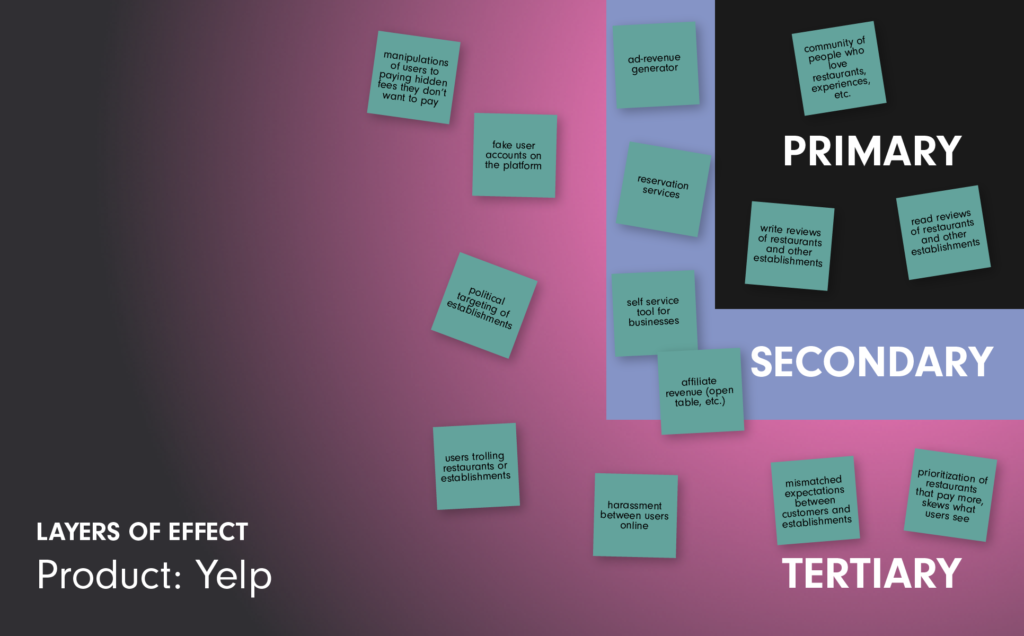Layers of Effect
Method Overview
Layers of Effect is a method designed to assist designers to evaluate the primary and secondary levels as well as forecast “unintended” as tertiary levels of effects of their product. The end goal is to help designers to re-frame the design of their product.

Getting Started
Materials: Layers of effect framework, Sheets of paper/ Whiteboard, pens, Post-Its
Participants: Design Team
Steps:
Using an example provided here, do the following:
- Identify a product you want to forecast and reframe.
- Using the Layers of Effect Framework, list primary and secondary levels of effects of the product.
- Primary Level: “These are the effects that you think of first when you think of a product or experience. Primary effects are pitched as the heart of a product. They are always intended and known” (Zhou, 2021).
- Secondary Level: “These are the effects that might not pop up immediately as the defining characteristic of a product, but are still just as relevant to the company’s shareholders” (Zhou, 2021)
- Using the Layers of Effect Framework, forecast “unintended” consequences as tertiary level of effect of the product.
- Tertiary Level: “These are the effects that are either unintended or unforeseen. These can be good or bad; in any case, tertiary effects are always surprises that start cropping up after users have had their hands on the product” (Zhou, 2021).